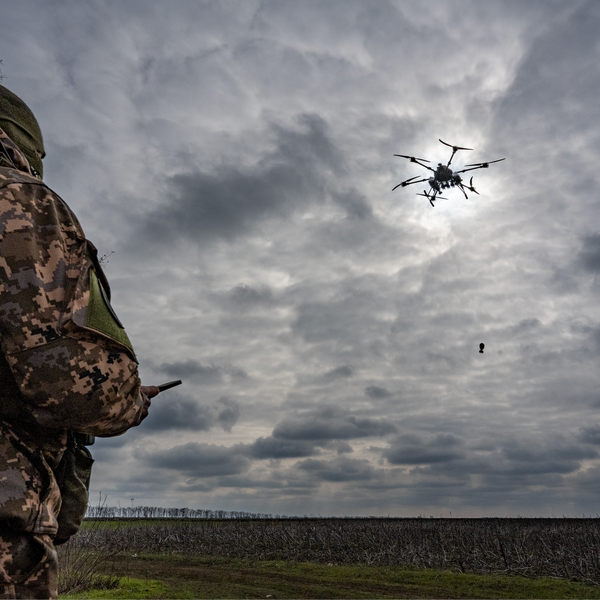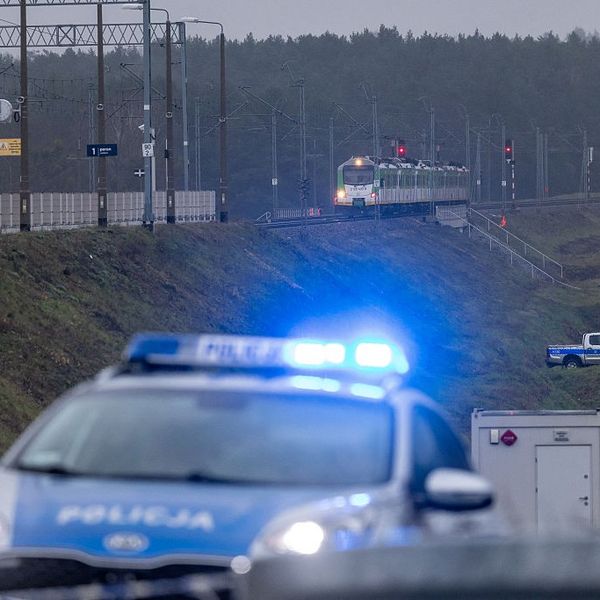A date for Washington-Moscow nuclear arms control discussions could emerge from today’s Washington meetings with Russian Foreign Minister Sergei Lavrov — first with Secretary of State Mike Pompeo and, if all goes well, later with President Trump.
From Trump’s point of view, raising the long-awaited possibility of extending the current New Strategic Arms Reduction Treaty (START) for another five years, would be a helpful headline to counter House impeachment charges laid out in Monday’s House Judiciary hearing.
Today’s stage for renewal of lagging START talks was set last Tuesday when Trump during his press conference in London with NATO Secretary General Jens Stoltenberg said, “Russia wants to make a deal. As recently as, like, two weeks ago, Russia wants to make a deal very much on arms control and nuclear. And that’s smart. And so do we. We think it would be a good thing.”
Trump then added, “And we’ll also certainly bring in, as you know, China. And we may bring them in later, or we may bring them in now. But Russia wants to do something badly and so do we. It would be a great thing to do.”
Bringing China into renewing START, which Trump has frequently mentioned before, has always been a non-starter, and always one that China has publicly shot down. But last Tuesday, note that Trump initially said, “…we may bring them in later…”
Hours later, in a press conference with French President Emmanuel Macron, Trump spoke of trying to get along with Russia and brought up having spoken with President Putin, adding that he (Putin) “very much wants to, and so do we, work out a treaty of some kind on nuclear weapons that will probably then include China at some point, and yourselves, by the way. But it will include China and some other countries.”
Note again Trump appeared to separate a bilateral negotiation with Russia first, and then a broader, more ambitious one with China and perhaps France and other countries.
In fact, Trump went on mentioning only Russia. He said, “So, we’re going to be dealing with Russia on a treaty where we really — and we’re focused on nuclear and nuclear weapons — missiles — but nuclear weapons. And we think something can be worked out. We think they want to do it. We know they want to do it. And we want to do it also.”
I am taking these Trump remarks last Tuesday more seriously because of what was going on before the Senate Foreign Relations Committee at almost the exact time, during testimony covering nuclear arms control by Christopher A. Ford Assistant Secretary of State for International Security and Nonproliferation.
In his prepared remarks at last Tuesday’s hearing, Ford said, “There remain signs of life for constructive dialogue with Moscow, upon which I believe we can build.”
Unlike Trump, Ford described in detail Russia’s current expansion of its nuclear forces, describing it as “an extraordinary new bestiary of nuclear delivery systems for which there are no U.S. counterparts.” He mentioned the new Sarmat intercontinental ballistic missile (ICBM), new hypersonic delivery vehicles, a nuclear-powered underwater drone, and the Burevestnik nuclear-powered cruise missile.
Ford described the latter as a “madly reckless ‘flying Chernobyl’ — a flying, nuclear reactor which recently experienced a flash meltdown that killed several Russian technicians and released radioactive contamination while the Russians were trying to recover it after having left it sitting on the bottom of the White Sea for a year.”
He also brought up Russia’s 2,000 non-strategic or tactical nuclear weapons which is down from the roughly 4,000 that existed when START was signed, but still vastly larger than the 400 to 1,000 tactical bombs in the U.S. arsenal.
Ford also covered the ground-launched cruise missile which the Russians produced and deployed, the weapon that we claimed breached the Intermediate-Range Nuclear Forces (INF) Treaty causing the U.S. to withdraw from that agreement.
Also unlike Trump during his London press conferences, Ford also brought up what the U.S. was doing to modernize its own nuclear forces, “replacing legacy [nuclear] delivery systems [strategic submarines, strategic bombers and ICBMs] in order to prevent block obsolescence of our nuclear ‘Triad’; developing a new sea-launched cruise missile to replace the one scrapped by the Obama Administration; developing a lower-yield ballistic missile warhead; deploying the modernized version of our B-61 nuclear gravity bomb and ensuring that our allies maintain dual-capable aircraft in order to keep NATO nuclear deterrence relevant in the years ahead, and building the kind of responsive nuclear production infrastructure we need to support defense and deterrence on an ongoing basis.”
With Congress as the audience, Ford had to show that there was a robust response underway to what the Russians were doing, so that the Trump administration’s efforts for arms control was coming from a position of power.
Thus, Ford was able to close his remarks saying, “We have convened teams of experts to explore the way forward, including the question of possibly extending New START, which would otherwise expire in early 2021 but could be extended for up to five years by agreement with Russia. We are hard at work on these issues and hope to have more to say about this soon. Let me say, Mr. Chairman, that I am personally excited about the prospect of building out our new arms control initiative. I look forward to keeping this Committee informed of these developments, and to working with you and your colleagues closely.”
Was there coordination between what Trump said last Tuesday in his press conferences at the NATO meeting and Ford’s testimony on Capitol Hill? Given the Trump Administration’s past record that might be hard to believe. Even at last Tuesday’s Senate hearing, Ford’s prepared statement could be read as more optimistic towards renewing New START than the one delivered by David Hale, Under Secretary of State for Political Affairs.
Hale told the senators, “We have not ruled out an extension of New START, but our priority is to promote arms control that goes beyond the confines of a narrow, bilateral approach by incorporating other countries – including China – and a broader range of weapons – including on-strategic nuclear weapons.”
During last Tuesday’s hearing, Ford said that Trump’s original arms control directive was to look beyond just a five-year extension to a time when China could vastly increase its deployed strategic nuclear warheads beyond the roughly 300 it is said to have today, a number not near the 1,500 warheads permitted the U.S. and Russia under New START. Ford described Trump’s proposed idea of a “trilateral cap,” although he could not say whether the U.S. and Russia would drop down or China would grow, or they would meet somewhere in the middle.
As of last Tuesday, Ford said a decision had not been made as to the U.S. position, but he added that one consideration could be an extension of shorter than five years, the first time that idea had been disclosed publicly by a senior American official.
Nevertheless, two days after Trump’s London statements and the Senate hearing, Moscow seemed to have heard that Washington appeared open to renewal. During a meeting with military officials, Putin said on December 5, “Russia is ready to extend the New START treaty immediately, before the year’s end and without any preconditions.” Putin added, “Our proposals have been on the table, but we have got no response from our partners.”
Today, Lavrov’s visit may see the unveiling of a new Trump administration proposal on renewal of the New START treaty, or at least a date for talks that could lead to that conclusion.
Read more national security news, insights and analysis in The Cipher Brief











